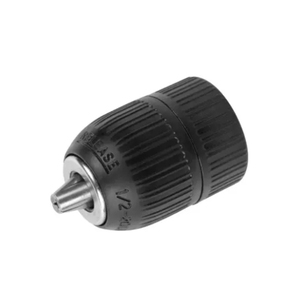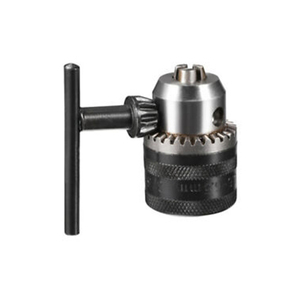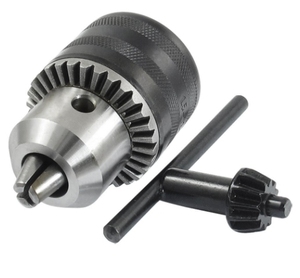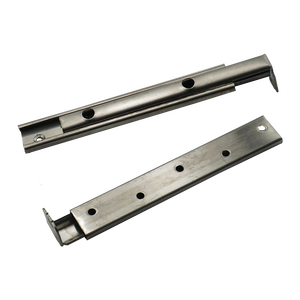
All categories
Featured selections
Trade Assurance
Buyer Central
Help Center
Get the app
Become a supplier

(9246 products available)




















































These are some of the more common parts of a power tool part factory, each of which is compatible with many tools.
Battery: Batteries act as power sources for cordless tools. They should be made from quality materials to hold energy for longer and give users more time to complete tasks without delay.
Brushs and Commutators: These components are mainly used in brushed motors. A brush transfers electric energy into the motor, and a commutator changes the current to enable motor rotation. These elements should be strong enough to resist wear and tear from constant friction on the motor's surface.
Bearing: Ball bearings reduce friction between movable parts within the power tool. They also help support the tool's shaft. The factory should stock steel or ceramic ball bearings. Ceramic ball bearings are ideal for cordless tools because of their lighter weight. They are also stronger than steel and are harder to break or crack. Stocking steel bearings is a more affordable option.
Bits and Blades: Drill bits, saw blades, and other attachments enable the tool to perform specific functions. Selects one that works for masonry, wood, or metal, depending on what customers need. For example, to create a blade, select durable materials that are heat-resistant and can easily cut through wood. A drill bit for a hole saw also needs to be made from strong material, like carbide.
Handle: The handle is the part users hold when operating the power tool. Handlesare usually made of strong but lightweight materials like reinforced plastic. This is a good material choice since it is easy to both carry the tool and use it with more control. A comfortable grip also reduces strain on the user's hands.
Housing: The housing or case protects all the internal parts from damage, dirt, and debris. High-quality plastic or metal cases are usually used since they are strong enough to protect the parts within yet light enough to move around easily. The color also acts as a decorative feature.
Switches: Switches control the power settings. A factory should stock different types of switches to cater to different tools. There are trigger switches for drills, paddle switches for saws, and many other varieties.
As people's preferences shift, the following trends regarding parts in power tools are becoming more common.
Increased Use of Cordless Tools: More workers are shifting to cordless power tools because they are easy to move around and enjoy using. As this trend grows, the demand for quality battery parts will also continue to increase.
Smart Technology Integration: Many power tools now come with tech features like app connectivity for easier monitoring. These require more advanced parts that can support such technology. This creates a need for things like sensors and smart batteries. Factories should prepare to stock these components, as more customers are drawn to tools with digital functionality.
Higher Demand for Replacement Parts: As power tools age, customers require replacement parts to extend their life. This increases the need for durable materials in manufacturing components.
Ergonomic Design: Today's power tools are being made with comfort and safety, reducing strain on the user's hands and body. This is especially welcomed by commercial clients like contractors who use tools for extended periods. The demand for these parts has led some factories to prioritize comfort when manufacturing components.
Sustainability Considerations: The materials used to manufacture power tool parts are becoming more eco-friendly. Many new batteries have less environmental impact, and tools are designed to use less energy. Factores that source these greener parts are helping to meet the requirements of eco-conscious consumers and adhere to environmental regulations.
Rise of E-Commerce in Replacement Parts: With the growth of online shopping, it is now easier for customers to order replacement parts for their tools. This has created new spaces in the market to supply aftermarket components through digital platforms.
These steps will help buyers make informed decisions regarding the factory they partner with.
Assess the variety of parts a factory can supply. Manufacturing facilities often focus on producing certain items. Partnering with a factory that stocks all the necessary components, like batteries, blades, casings, handles, etc., ensures fast service. A factory's ability to provide many goods can also help increase business reach.
Look at the quality of the materials used by the factory. Factories that prioritize using durable elements like steel, plastic, carbide, or ergonomic materials will usually make components that last longer. The factory should have quality checks to confirm the sturdiness and safety of each item. Good parts will ensure more satisfied customers and boost an enterprise's reputation.
The factory's production capacity and efficiency also need to be assessed. Manufacturing facilities should have sufficient equipment and personnel to fulfill large orders within the necessary timelines. The factory's lead times and flexibility in handling urgent orders should also be considered, as they can support a business in maintaining inventory levels to meet customer requirements.
Thirdly, consider the technology and equipment used by the factory. Power tool parts are becoming integrated with smarter technology, such as sensors and app connectivity. Factories that invest in advanced manufacturing methods will be able to provide more innovative components that meet evolving market needs.
Evaluate the factory's adherence to industry standards and certifications. Factories that follow safety and environmental rules showcase their dedication to responsible manufacturing and can be more reputable. Lastly, research the factory's customer service. Factories that respond quickly to inquiries and have open communication channels make establishing a successful partnership easier.
Considering these factors will make partnering with a suitable factory and supporting business growth easier.
Here are some strategies to help retailers increase their margins.
Providing quality materials will be the most significant profit booster. Durable components that withstand constant use keep customers content. Since quality parts are critical to power tool performance, retailers should ensure they supply only the strongest materials, such as steel, carbide, plastics, and others.
Stocking various equipment will also help attract and retain customers. Buyers are usually drawn to places they can find all they need. Since batteries, blades, handles, housing, etc., work with multiple tools, parts like a saw blade for a hole can be compatible with many. Retailers can also supply items that are becoming popular, like ergonomic handles and smart batteries.
Retailers can negotiate favorable terms with their suppliers to help increase profits. When dealing with large wholesalers or directly with manufacturers, retailers should try to get bulk purchase discounts. They could also request more lenient payment options or returns for unsold items, as these could ease the initial financial burden. Therefore, more retained earnings could result in a higher福利视频色情 income because of lesser personal loan or bills due.Retailers should also market their products to showcase the quality or variety of parts they supply. When the parts are of superior quality, they can highlight them using simple online ads to show that the materials are stronger than metal or steel. They can also share testimonials or case studies online that support the claim of the functionality of the components.
By focusing on quality, variety, strong supplier relationships, and marketing, retailers can increase their margins.
A1: Steel, plastic, carbides, ceramic, rubber, and other materials are commonly used to manufacture parts for power tools. Steel works well for blades, drill bits, and other sturdy components because it is strong and can resist wear. Plastic is light and easy to mold, so it is often used for battery casings and handles. It can be used to make bits that are more robust and have a longer life by embedding carbide. Ceramic is used for drill bits and cutters that can withstand heat. Rubber is also cheap but strong and flexible. It is often used for gaskets and seals to prevent dust or moisture from entering the tool.
A2: A faulty switch will interact inconsistently, require more force, or possibly spark. These are all clear signs that the switch is damaged. A broken switch will not turn on or off. If there is any liquid spillage on the power tool, it will damage the switch. A faulty switch restricts access to the tool and poses a danger to the user. Replacing the switches can fix this and help the end users save onbuying a new tool.
A3: The type of power tool determineswhichparts should beused. The tools and users' requirements are the other factors that dealers need to consider.
A4: The quality of use impacts whether the component is worn out or replaced, so there is no single lifespan estimate for power tool parts. For example, good-quality ball bearings can last for many years, whereas blades may dull after several uses, depending on what material they are cutting.